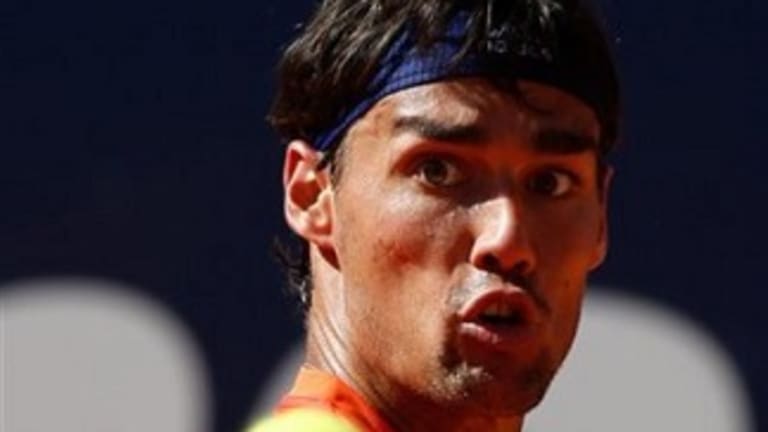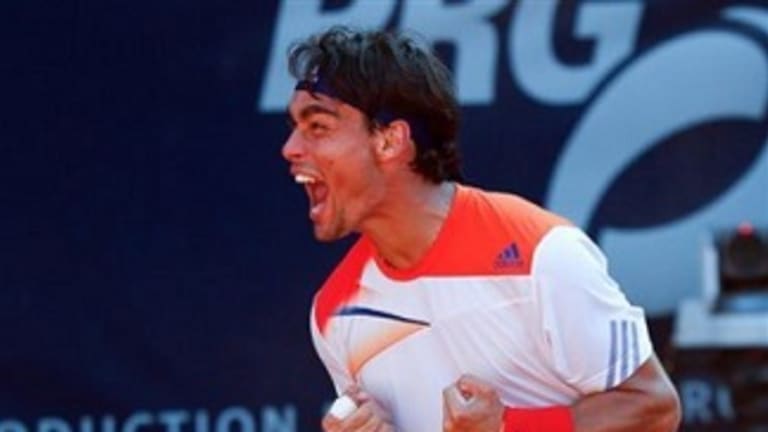In and of itself, this would be a nice little story, if not exactly unique. Other players have won two and sometimes even three — or more — events running. What makes this story different is that it has an unexpected and unusual protagonist. Fognini has been many things in his nine years as a pro, most of them somehow related to his striking good looks and sex appeal. The one thing he hasn’t been until these past few weeks is a pro tennis champion. The titles he earned in Germany are the first two of his career. Now he’s acting like he’s not about to stop.
The remarkable thing about Fognini’s recent record is its consistency — the single trait we least often associate with players like Fognini, whom we tend to lump together under the affectionate label, “head cases.” For some time now, Fognini has been jockeying with the likes of Benoit Paire and Grigor Dimitrov for leadership in that mercurial, unpredictable, conspicuously – if not always conventionally – talented class of player. And it isn’t like Fognini is a kid who just grew up, either — not unless his adolescence was prolonged into his 26th year on the planet. He’s kind of a senior head case.
In any event, Fognini is a welcome addition to the Top 20 (he’s currently No. 19). Fabulous Fabio’s game is delightful, full of legerdemain and surprise. If the brutal wars of attrition routinely engaged in by the Rafael Nadal’s and Novak Djokovic’s of the tour are like heavy metal, Fognini is like jazz. He’s improvisational, creative and full of syncopation, as befits a temperamental and expressive Italian.
Fognini also pulls off impossible shots with striking ease, and blows easy shots with such regularity that you’d better not leave one of his matches, convinced he’s either cooked or in full control. He can be both at the same time and you never quite know how things will end up. But that’s also just what’s been changing these past few weeks.
Fognini’s run probably has roots in his performance in Monte Carlo, way back in mid-April. There, he took out three players ranked above him starting with his countryman (and the man he would soon replace as the top Italian on the tour) Andreas Seppi. He also accounted for No. 6 Tomas Berdych and No. 9 Richard Gasquet before he bowed in the semifinals to No. 1 Novak Djokovic.
Okay, so he lost in the quarterfinals of his very next tournament (Oeiras) to the No. 228 player, Pablo Carreno Busta. The way Fognini is going, Busta now has something to tell his grandchildren.
Fognini won exactly one match in his next two tournaments, but it was a significant one for him — a 6-4. 6-1 blowout of Seppi in Rome. He made it to the third round of Roland Garros, where he lost in straight sets to Rafael Nadal but looked better than almost anyone else even as he went down. In that match, Fognini showed true daring, and an admirable degree of composure. Even his familiar emotional outbursts seemed positive as he went about his business, his way, seemingly oblivious to the dangerous working conditions.
Fognini’s current streak began shortly after he went 2-2 on grass. Ranked No. 31, he upset No. 11 Tommy Haas at Stuttgart and one match later he reached the third tour final of his career (all in ATP 250s). He won the title over a guy buoyed by the encouragement of his German countrymen, No. 25 Philipp Kohlschreiber.

